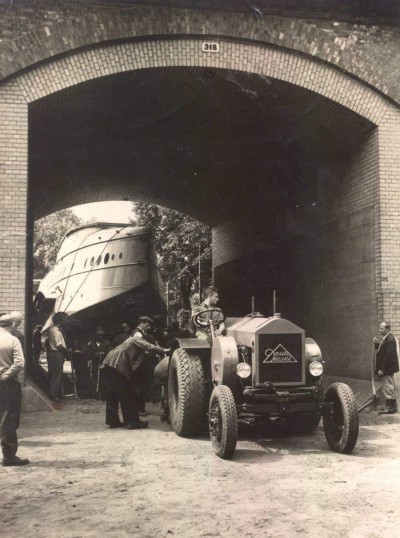For Claude Dornier, the
twelve-engined flying boat Do X represented the culmination of a whole
family of successful flying boats. When designing the Do X, which was
exceptional with regard to both dimensions and weight, Claude Dornier
placed the greatest emphasis on using only "technically proven"
materials and construction techniques such as the special Dornier
combination of light alloy and steel, a semicantilever monoplane design,
a tandem arrangement of the engines, and an inherently stable hull with
floats directly attached to each side of the hull in the form of stub
wings

A new feature was the
division into three decks. The cockpit, the navigation and radio room
and the machinery room were located on the upper deck, while the main
deck with its luxurious furnishings provided seating for up to 66
passengers. The lower deck was used to store fuel and supplies. For the
first time in the history of aviation, a one-to-one wooden mock-up of an
aircraft was built. For the construction of the Do X, a special assembly
hangar with a slipway had to be erected, the site selected being
Altenrhein on the Swiss shore of Lake Constance

The initial blueprint
dates from September 1924 and design work was begun in the autumn of
1925. Approx. 240,000 hours of work were invested before the Do X was
completed. On July 12, 1929, Dornier's pilot-in-chief Richard Wagner
took off on the successful maiden flight of the Do X. The record flight
completed on October 21, 1929 with 169 people on board remained
unsurpassed for 20 years. After a series of test flights amounting to
roughly 35 hours, during which the air-cooled Jupiter engines from
Siemens proved to be unreliable, the decision was taken to re-equip the
flying boat with water-cooled Curtiss Conqueror power plants, each
providing 640 hp. The first flight with the new engines took place on
August 4, 1930. On November 5, 1930, the Do X took off on its highly
acclaimed demonstration tour through Europe, on to the west coast of
Africa and then to North America and the final destination New York.
Here, the population gave the flying boat a rapturous welcome when it
arrived on August 27, 1931. After the completion of extensive
maintenance work, the return flight from New York to Lake Müggelsee by
Berlin took place between May 19 and May 24, 1932, with intermediate
stops in Newfoundland, the Azores and Great Britain. Hundreds of
thousands of people took the chance to see the Do X on its tour of
Germany in 1932-1933. In 1934, the famous flying boat was passed on to
the Museum of Aviation in Berlin, where it was destroyed during air
raids in 1945.
On November 5, 1930, the
Do X took off on its highly acclaimed demonstration tour through Europe,
on to the west coast of Africa and then to North America and the final
destination New York. Here, the population gave the flying boat a
rapturous welcome when it arrived on August 27, 1931. After the
completion of extensive maintenance work, the return flight from New
York to Lake Müggelsee by Berlin took place between May 19 and May 24,
1932, with intermediate stops in Newfoundland, the Azores and Great
Britain. Hundreds of thousands of people took the chance to see the Do X
on its tour of Germany in 1932-1933. In 1934, the famous flying boat was
passed on to the Museum of Aviation in Berlin, where it was destroyed
during air raids in 1945.

the Do X being transferred to the Museum of Aviation (photo Dhr. W. Boks)
In the early 1930s two of
these flying boats, the Do X 2 and Do X 3, both equipped with Fiat power
plants had been delivered to Italy. The ferry flights were a spectacular
event since the Alps were crossed at an altitude of 3,200 meters. After
round trips through Italy, the two flying boats were used for training
and transport before they were withdrawn from service in 1935 and
subsequently scrapped.